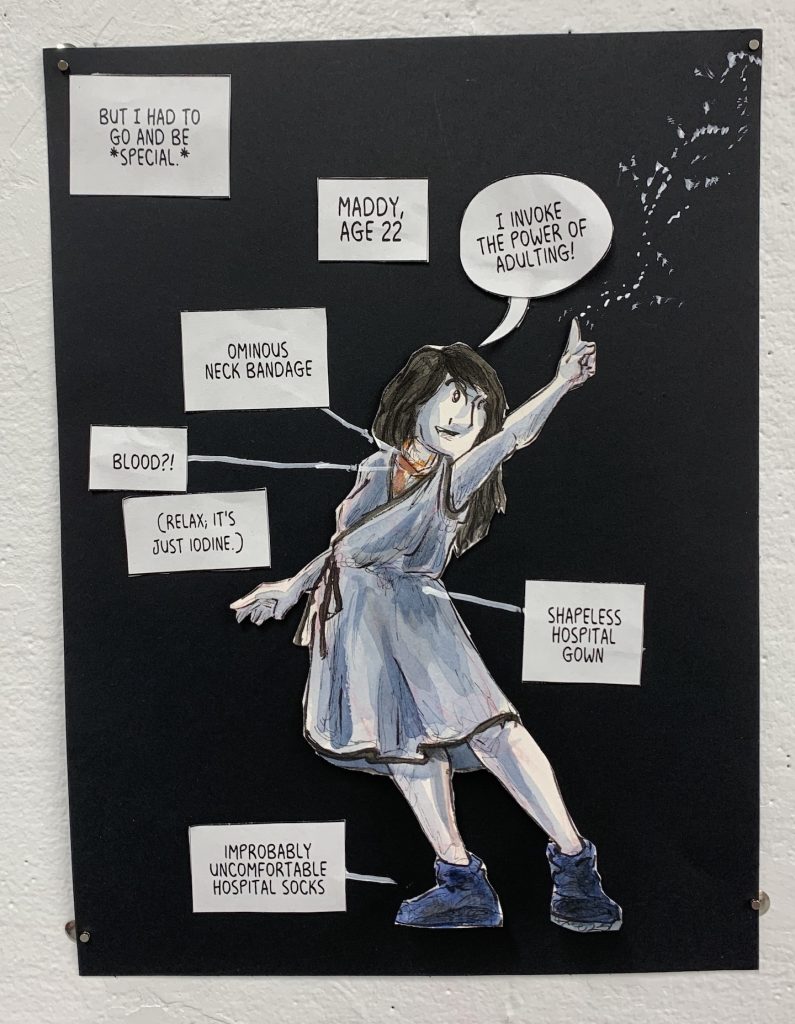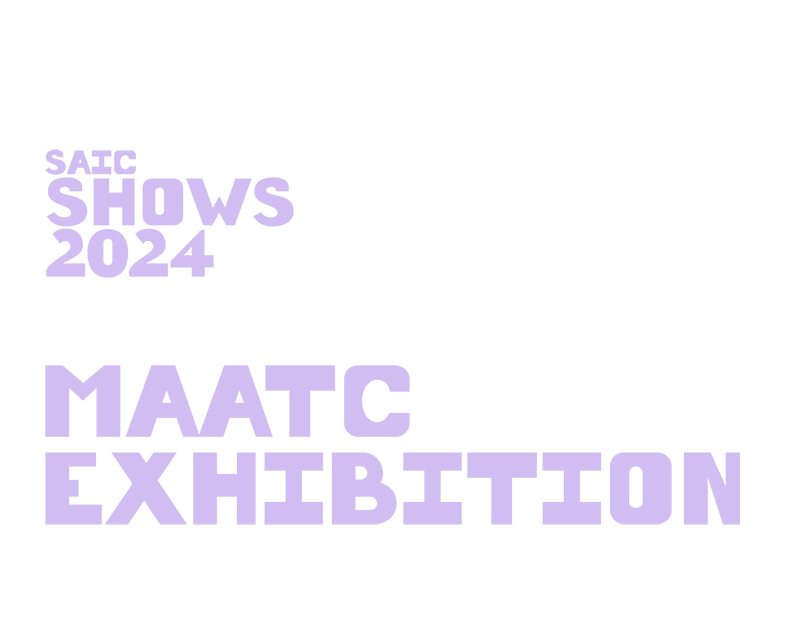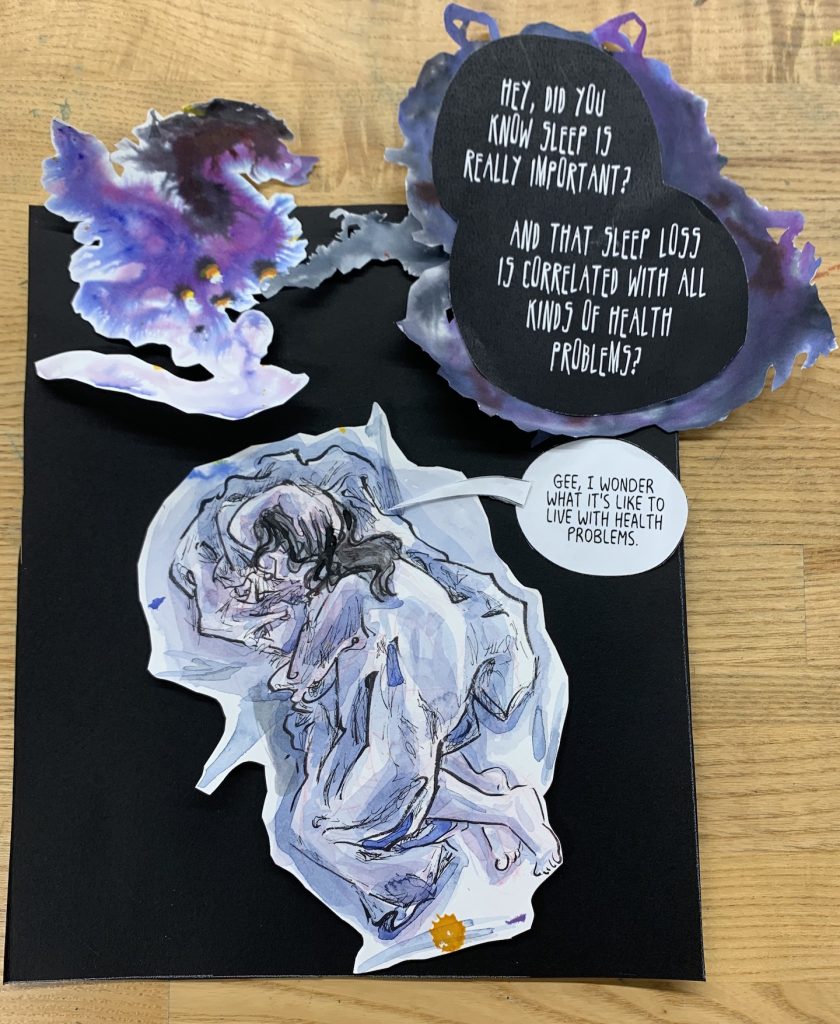Maddy Engelfried is an English major turned cartoonist-art-therapist, which probably explains her obsession with metaphors. She is a survivor of thyroid cancer, but she also plays tabletop RPGs, sews, writes fiction (prose and comics), collects hair ribbons, and makes a pretty decent challah. She has complicated feelings about the superhero comic genre, which she will elaborate if you ask her to. She grew up in California, spent most of her adult life in Portland, and is currently studying to be an art therapist in Chicago.
I have been told, by people who presumably wish me to deliver the news accompanied by somber organ music and perhaps a crowd of wailing mourners, that I am “very cavalier” about my cancer diagnosis. The fact is, I don’t know how to say “I technically still have cancer” in a way that sounds both serious enough to convey the reality of my situation and casual enough for everyday talk. In exploring metaphor through autobio cartooning, I hope to investigate ways to make sense of my situation, if not for everyone else, then at least for myself.
I identify primarily as a cartoonist, which is either a type of artist, an irredeemable social deviant, or a species of particularly pernicious weed, depending on who you ask. I use a combination of analog and digital media to make comics – pen and ink, watercolor, digital lettering, blood, sweat, tears, and Clip Studio Paint. Modern comics originated as a Jewish-American art form, and much of my own Jewish heritage was passed down to me through my father’s comic books, where I first became fascinated with how a narrative could shift from poignant to hilarious somewhere in the space between two panels. My other cartooning influences include E.K. Weaver, Lucy Bellwood, Danielle Corsetto, Fabio Moon, and Gabriel Ba. I’m also inspired by comics in the graphic medicine genre, including Ellen Forney’s Marbles, Peter Dunlap-Shohl’s My Degeneration, and David Small’s Stitches.
In Dead Metaphors, I try to use humor and metaphor not as shields to escape or deflect my existential terror, but rather as a sort of camouflage that allows me to approach it from a safe distance (see what I did there?). I combine traditional comic media of pen and ink with unconventional methods like tie-dye powder blooms and scribble drawings to give the reader a sense of the surreal experiences of living with cancer as a chronic illness. The challenges of exhibiting a cartoon in a gallery have led me to experiment with composition. No longer bound by petty concerns of page sizing or printing costs, I have gone mad with power and decided to find out just how weird I can get with my layouts before Alan Moore tracks me down and beats me to death with a nine-panel grid. Until that fateful day, I mean to push the boundaries of sequential art composition using overlapping cutouts, whimsical word balloon placement, and playful combinations of absurdity and realism.
 Executive Dysfunction, 2023. Watercolor, gouache, pen and ink, digital lettering, and tie-dye powder on paper.
Executive Dysfunction, 2023. Watercolor, gouache, pen and ink, digital lettering, and tie-dye powder on paper. Magical Girl Transformation Part I, 2023. Watercolor, gouache, pen and ink, acrylic paint, digital lettering, and tie-dye powder on paper.
Magical Girl Transformation Part I, 2023. Watercolor, gouache, pen and ink, acrylic paint, digital lettering, and tie-dye powder on paper. Magical Girl Transformation Part II, 2023. Watercolor, gouache, pen and ink, acrylic paint, digital lettering, and tie-dye powder on paper.
Magical Girl Transformation Part II, 2023. Watercolor, gouache, pen and ink, acrylic paint, digital lettering, and tie-dye powder on paper.



